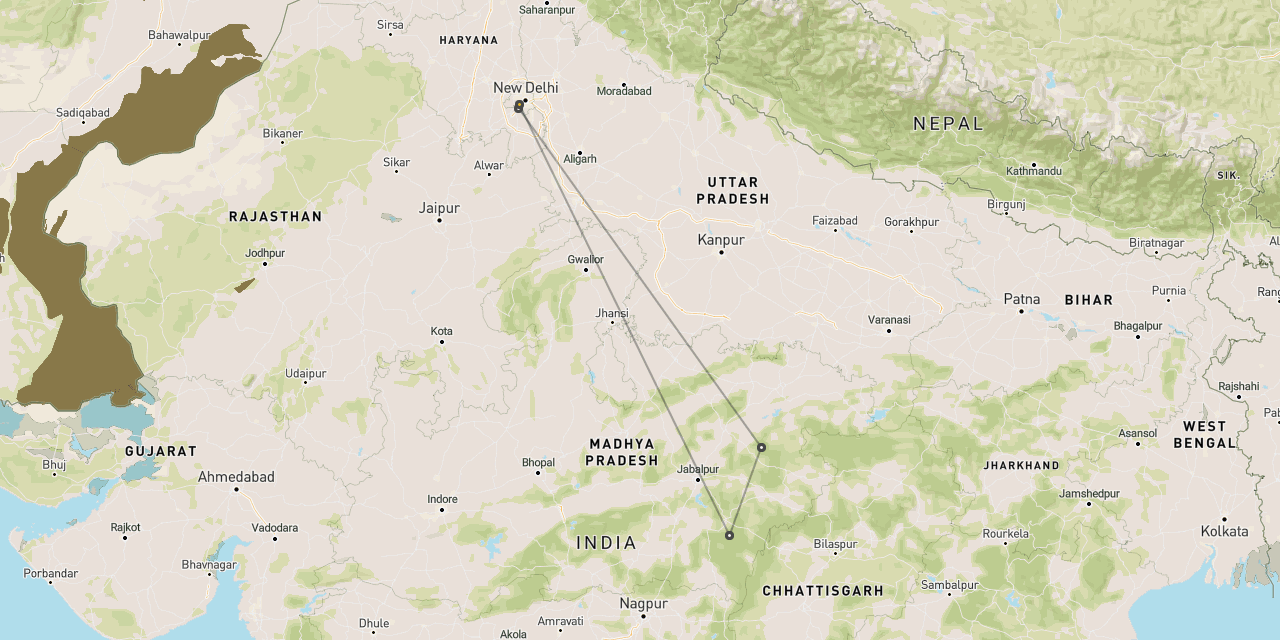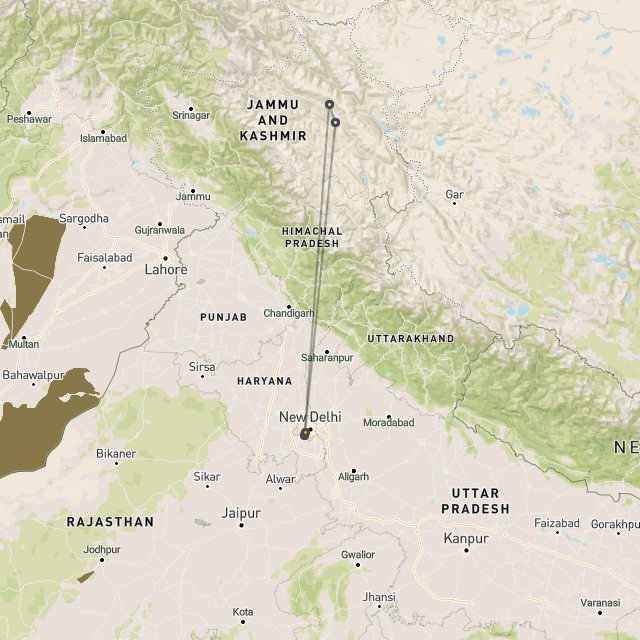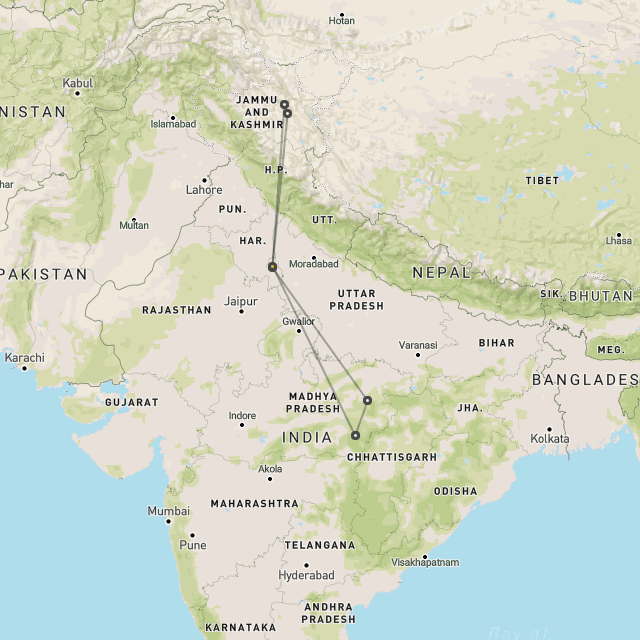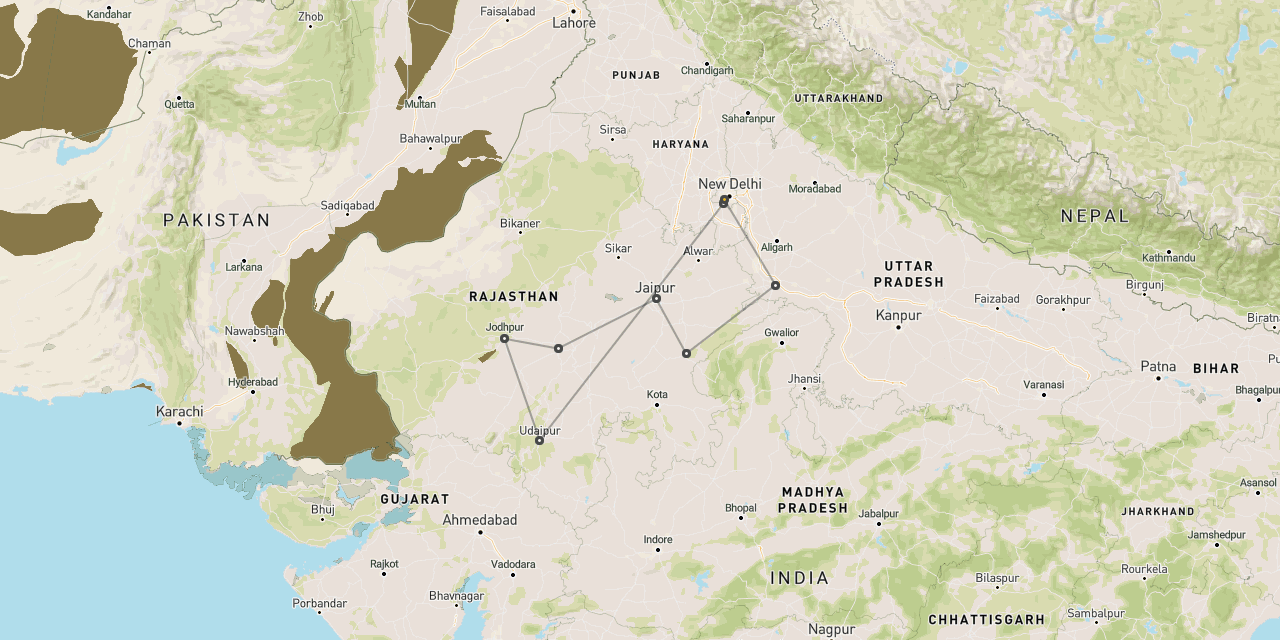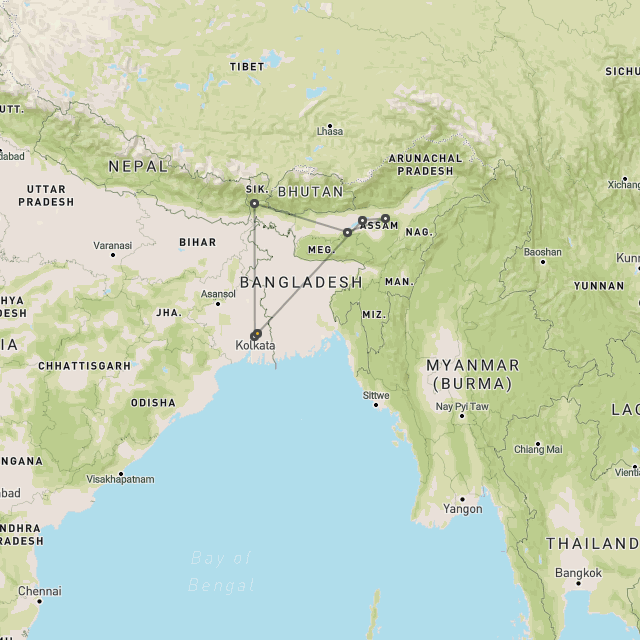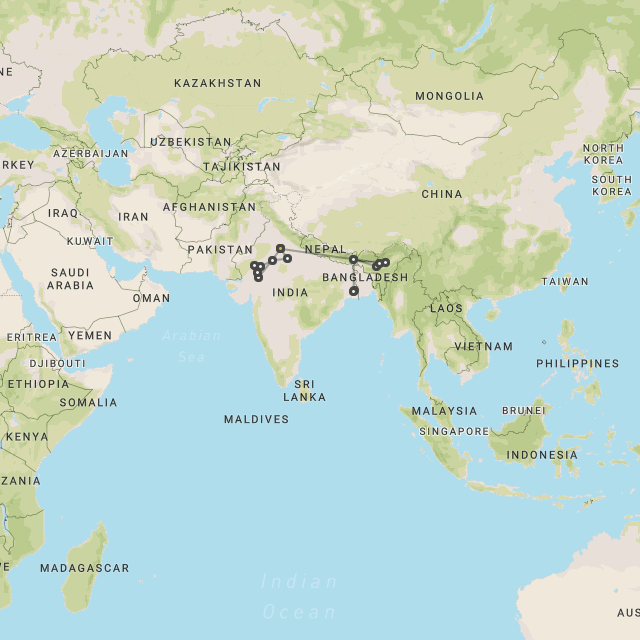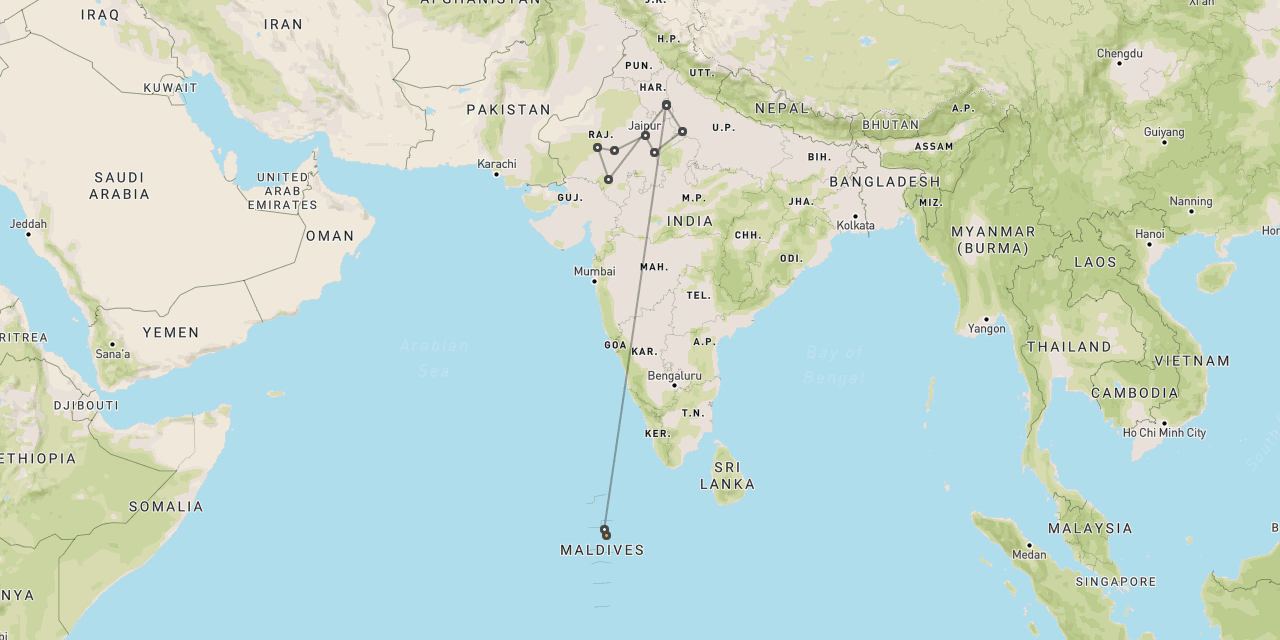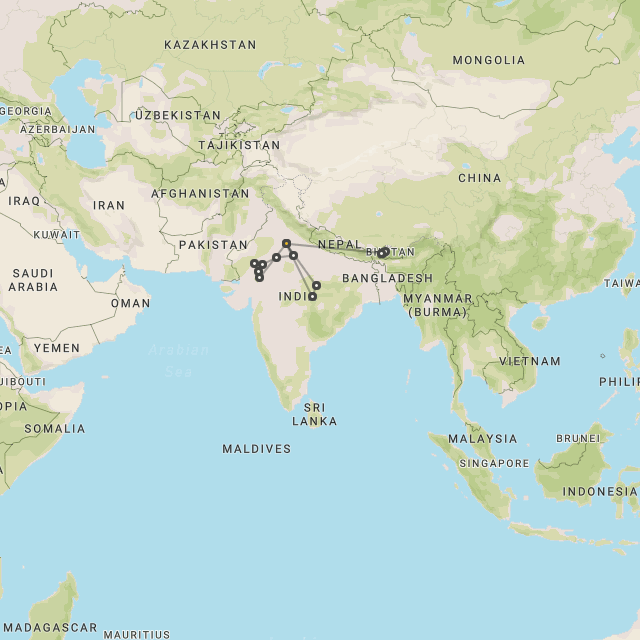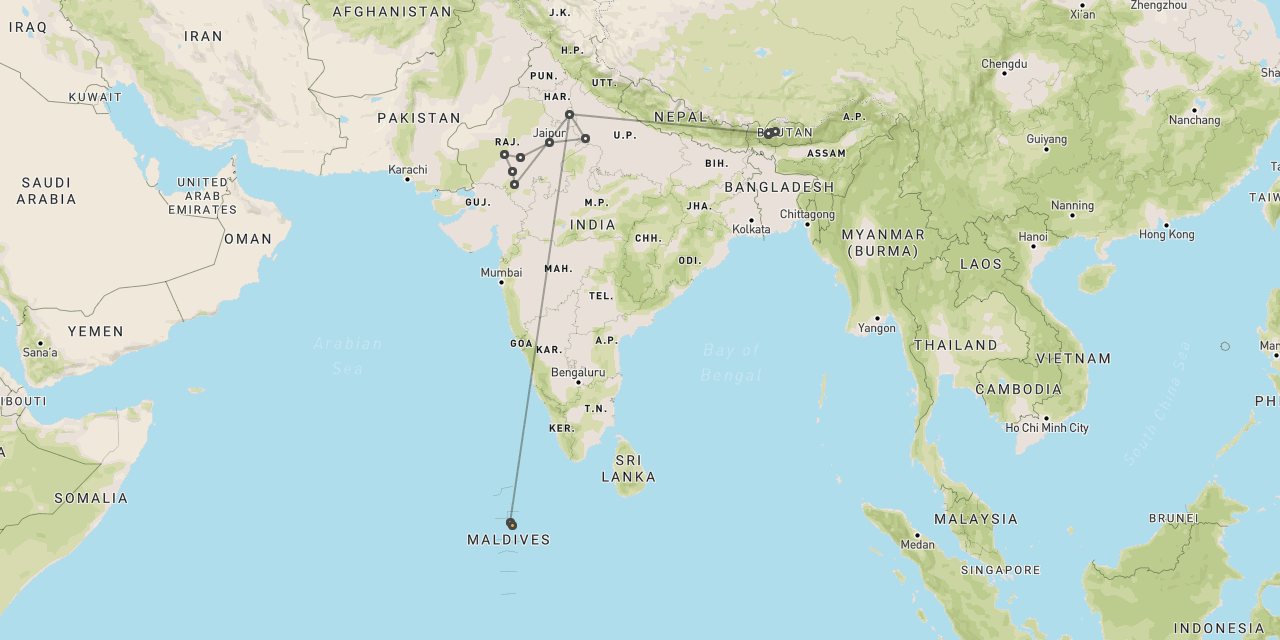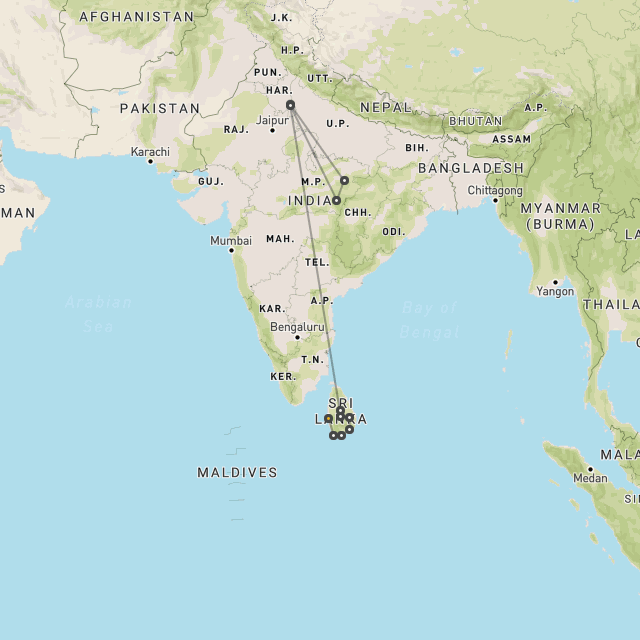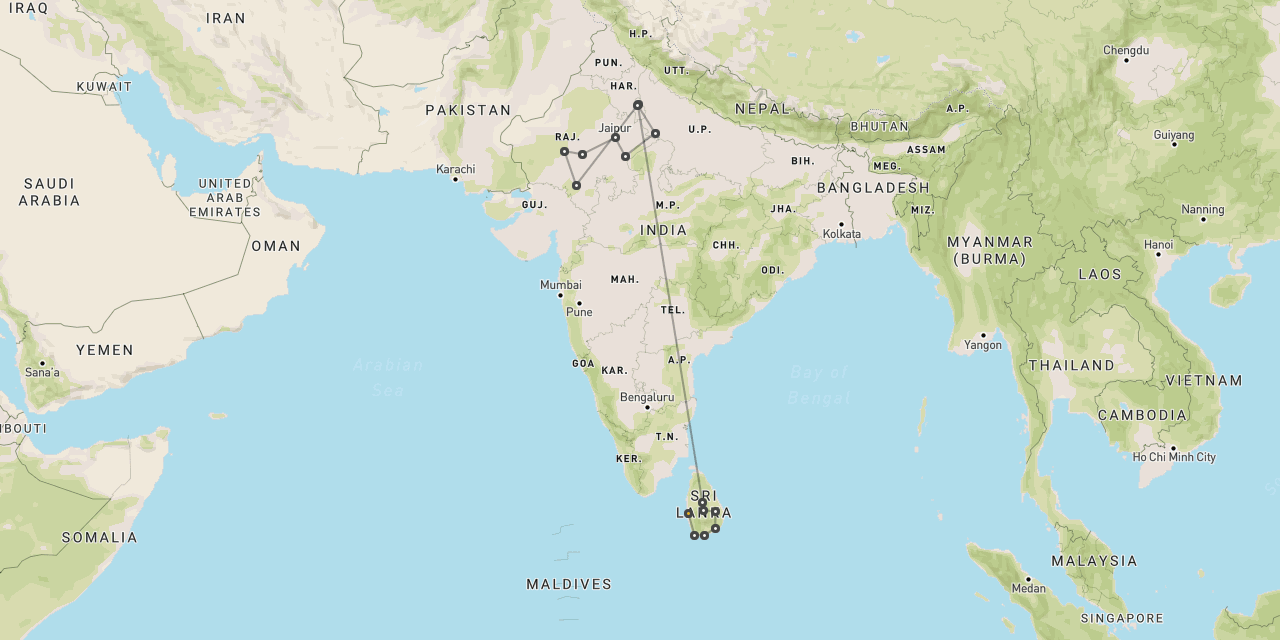
Safari to Ladakh
Ladakh
is a magical hidden kingdom,
of Buddhism and snow leopards

known colloquially as Little Tibet
Ladakh is located in the far northwest corner of India, roughly 600 km (360 miles) north of Delhi.
Hidden away high in the Himalayas, this remote area is the least inhabited part of India, with vast stretches of spectacularly empty mountain landscapes and just a few small settlements set deep within the dramatic river valleys.
Unlike the predominantly Muslim areas to the south and west, Ladakh has a very significant population of Buddhists. The presence of these people, along with their traditional architecture, has led to the area becoming known as Little Tibet.
Traditionally the people of these remote valleys have made a living from the trans-Himalaya trade routes between Tibet and Pakistan, but with the Chinese having closed the borders during the 1960s, the people have increasingly turned to tourism to make ends meet.
A defining characteristic of the area is the modesty of the people and the clever ways that they manage to get by on such scant natural resources. The indigenous culture has developed some interesting aspects in this regard, including polyandry (in which a woman marries all the brothers of a family in order to prevent land being subdivided between offspring), primogeniture (in which the eldest son inherits the whole estate of his father), khangbu (a little house into which a father and mother retire when their eldest son gets married and takes over the main house on a farm) and monasteries (which take large numbers into celibacy men and women).
The main town of Leh is the location of the main airport. Guests arriving here need to appreciate that they are at 3500 metres (11500’) and should take it easy for at least two full days in order to acclimatise to altitude, before undertaking any significant activity.
Leh is set in the valley of the River Indus, which carves its way through the territory and is home of the majority of the settlement and farmland. Beyond the valley the terrain becomes extremely mountainous and remote.
Ladakh is very much a frontier area. Ownership of much of the territory around here is disputed with Pakistan and China, so the Indian army retains a strong presence. Tourism is generally considered to be safe, but numbers remain low.
The main reasons to visit are to take in the wonderful and stark mountain scenery, to explore the Buddhist culture, to visit spectacular remote monasteries and to undertake day hikes and multiple-day treks through these high valleys. There are also opportunities for camel safari, mountain-biking and white-water rafting.
It’s also possible to encounter some rare and interesting wildlife. Topping the bill are snow leopards, which are extremely shy, but which can be encountered using a highly skilled group of mountain trackers.
Other animals include Tibetan wolves, brown bears, ibexes, bharals (blue sheep), shapos (wild goats), argailis (very rare wild sheep), chorus (Tibetan antelopes) and kyangs (Tibetan wild asses).

Gallery

Video
Map
The best time of year for general travel in the Ladakh area is generally considered to be during Apr-Oct, which is the summer season. Note that this is in contrast with most of the rest of India, which experiences its hot monsoon at this time.
By contrast, the best time for snow leopards is during the Nov-Mar winter season, when heavy snow at high altitudes forces the cats down into the valleys, making them a good deal more accessible.
Jun-Sep is the main summer season. During Jun-Sep the daytime temperatures climb to around 24C/75F, whilst the nighttime low temperatures hold up around 10C/50F. Precipitation is usually very occasionally and usually falls as snow. Sunshine is around 8 hours per day (around 65% of daylight hours), meaning that skies are often clear.
October is the transition period between the end of the mild summer and the start of the cold winter. During October the daytime temperatures usually rise to around 15C/59F, whilst the nighttime low temperatures only fall to around -1C/30F. Precipitation is usually very occasionally and usually falls as snow. Sunshine is around 8 hours per day (around 75% of daylight hours), meaning that skies are often clear. If the weather becomes cold early, then the snow leopards may be forced down to lower altitudes and become more accessible.
Nov-Feb is the main cold winter season. During Nov-Feb the daytime temperatures struggle up to around 4C/39F, whilst the nighttime low temperatures plunge to around -12C/10F. Precipitation is usually very occasionally and usually falls as snow. Sunshine is around 6 hours per day (around 55% of daylight hours), meaning that skies are often overcast. The best period for snow leopards is the Nov-Mar winter season, when heavy snow at high altitudes forces the cats down into the valleys, making them a good deal more accessible.
Mar-May is the spring season, with conditions improving as the weeks pass. During Mar-May the daytime temperatures can climb to around 10C/50F, whilst the nighttime low temperatures hold up around -1C/30F. Precipitation is usually very occasionally and usually falls as snow. Sunshine is around 8 hours per day (around 65% of daylight hours), meaning that skies are often clear. The snow leopard season continues into March, but with increasing chances of the cats retreating into the high valleys, out of range.
Getting there
The Ladakh area can be accessed in a number of different ways…
By air
The only viable option for most international travellers heading for Ladakh is to fly from Delhi to Leh (IXL). There are regular (usually daily) flights.
By road
There are roads from Chandigarh, Shimla and Amritsar which lead up through the mountains to reach Ladakh, but these are tortuous and potentially dangerous routes which are only suitable if you are a very intrepid traveller and you have lots of time on your hands.
Where to stay
If you are intending to visit for snow leopards, then you need to visit during the Nov-Mar winter, staying mainly in the superb and very remote LungMar Camp, probably in combination with a relatively bland property in the less then totally attractive city town Leh.
If you are intending to visit Ladakh for the scenery, culture and outdoor activities, then you need to visit during the Apr-Oct summer, when a much wider range of accommodation opens up in the more remote and attractive villages.
touring in summer, snow leopards in winter
let us know your thoughts about India
and we will help you create the perfect trip

Extraordinary tailor-made adventures,
from earthy and edgy to easy and extravagant
From around USD 2500 per person, you set the ceiling
Sample Trips
Here are some of our popular trip shapes

Get started on your trip
It’s never too soon to get in touch, we are here to help with every stage of your planning.
Best Lodges
We regularly inspect and photograph all of the the best lodges, to ensure that we always recommend the most suitable options
Key Locations
Take a look around related locations. Click ‘View more’ to explore locations further afield.

















